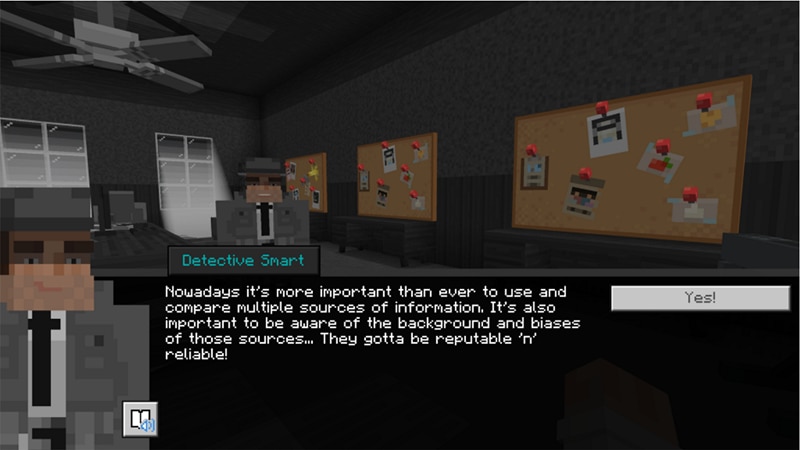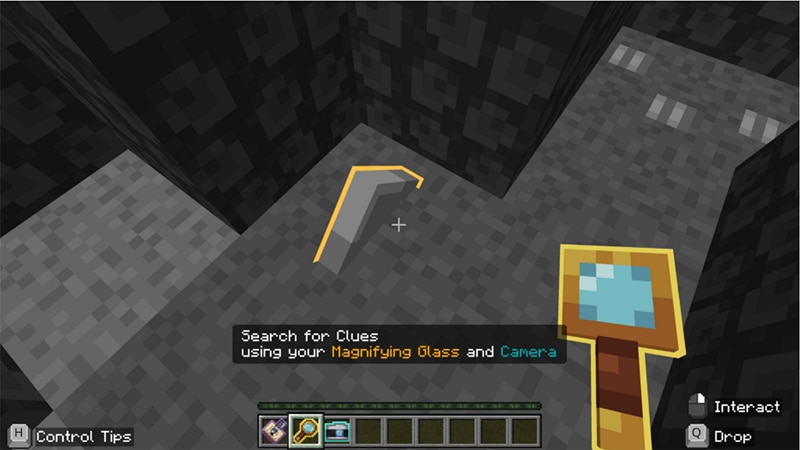Real-World Skills Through Immersive Gameplay
Each case within Reed Smart: AI Detective targets specific challenges educators face when teaching AI literacy:
- Case 1: The Deepest Fake demonstrates how convincing AI-generated videos can be, teaching students to look beyond surface appearances and use multiple sources to put information in context.
- Case 2: An Ode to Deception explores the double-edged sword of AI detection tools, showing how over-reliance on technology without human judgment can lead to false accusations.
- Case 3: Dine & Deceive illustrates how AI can “hallucinate” inaccurate information, teaching students the importance of verification, even when AI sources sound authoritative.
“We designed each case to reflect real scenarios students might encounter, and real concerns that they have,” notes Reppell. “The false AI plagiarism case, for example, speaks to a concern that is top of mind for students and educators: making sure students get credit for their authentic work, while deterring inappropriate AI use on assignments.”
We also wanted to make sure that the content speaks to the realities of how digital natives make sense of information. For example, young people often use social validation and peer consensus as primary factors in determining information credibility. Reed Smart: AI Detective acknowledges these behaviors while guiding students toward more effective verification strategies. For instance, students learn that while comment sections can provide clues about trustworthiness, they shouldn’t be the sole basis for judgment.
“We’re not just teaching students to spot today’s deepfakes,” emphasizes Reppell. “We’re giving them a framework for evaluating whatever new forms of AI-generated content emerge in the future. The detective skills they learn—gathering evidence, cross-referencing sources, maintaining healthy caution—will serve them well regardless of how technology evolves.”
Practical Application for Educators
Reed Smart: AI Detective transforms abstract digital literacy concepts into concrete, teachable moments. When students use their magnifying glass to highlight clues, they’re practicing the quick scanning techniques needed for efficient online verification, with an opportunity to practice critical ignoring. When they photograph evidence and organize it on their case board, they’re learning to document and synthesize information from multiple sources, building the mental muscle that helps them do this in real-world scenarios as well.
This type of practice has dramatic effects: research shows that targeted digital literacy instruction can improve students’ ability to discern accuracy online by 40% in just 6 hours. With Reed Smart, educators can deliver this instruction through immersive gameplay that students find relevant and highly engaging.
Research also stresses that media and information literacy must be embedded across the curriculum rather than confined to occasional library sessions. With a complete lesson plan, student workbooks, and discussion prompts, educators can use Reed Smart to incorporate these topics into various subjects:
- English classes can explore narrative reliability and source credibility
- Social studies classes can examine the societal impact of misinformation
- Technology courses can dive deep into how AI generates content and the limitations of AI-detection technology
- Ethics discussions can explore issues like responsible AI use and digital citizenship
As students progress through the game world, the colors slowly change from noir-style black and white to vibrant color, a visual metaphor for evolving from simplistic thinking to nuanced understanding. This transformation mirrors the cognitive journey students undertake, moving from binary 'true/false' thinking to sophisticated evaluation of information credibility, source reliability, and contextual factors. The color transformation gives students a tangible sense of progress and achievement while reinforcing the learning objective about moving beyond ‘black-and-white’ thinking.





